Paw-Paw
Paw-Paw
Asimina triloba
Annonaceae (Custard-Apple Family)
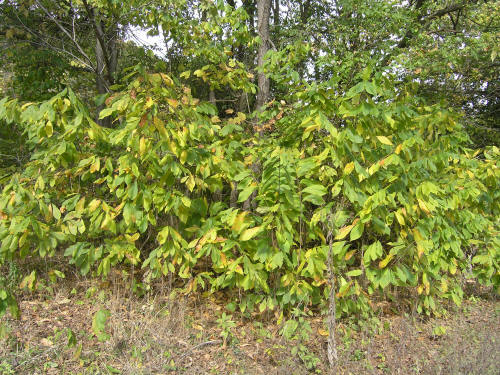
▲ Grove of paw-paw trees at Springfield Nature Center
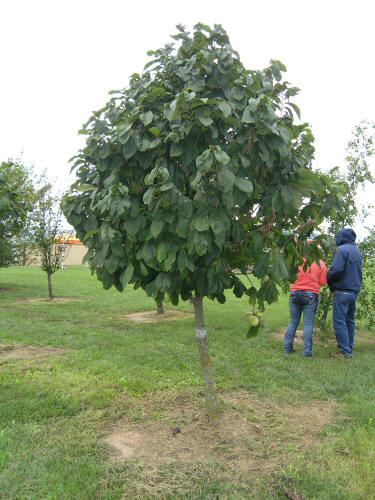
▲ cultivated tree at University of Missouri Southwest Center in Mount Vernon, MO
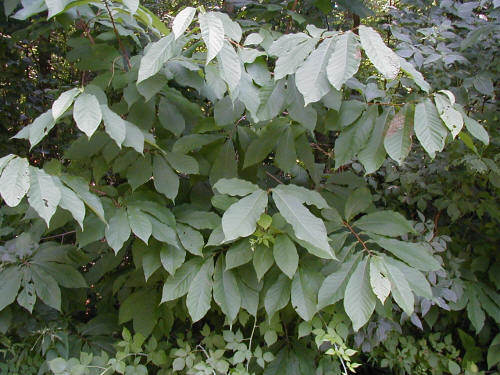
▲ ▼ Leaves and branching of paw-paw trees in Stone County, MO
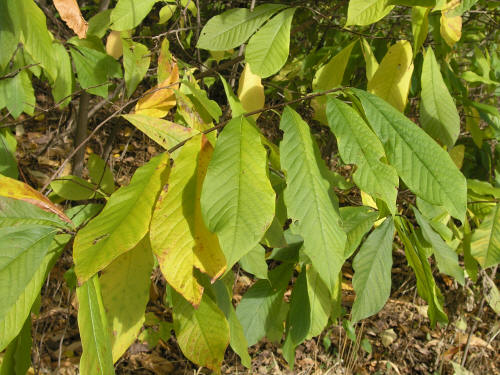
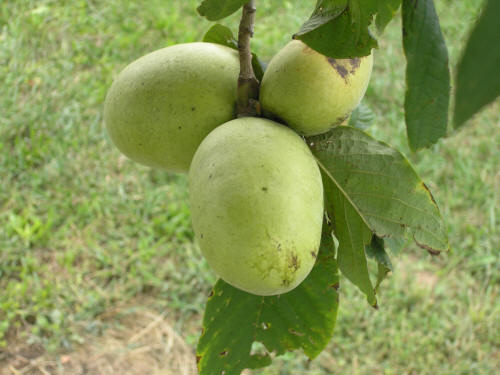
▲ unripened fruit on tree
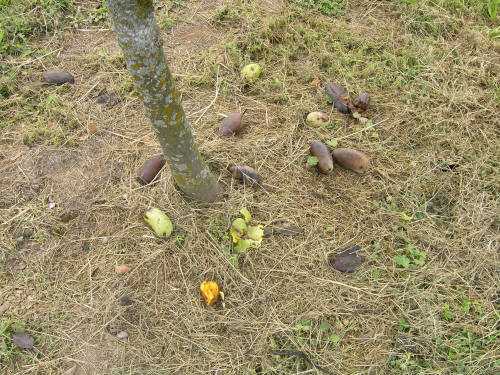
▲ ripe and unripened fruit on ground
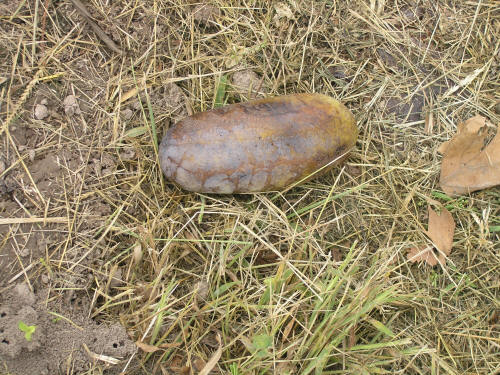
▲ ripe fruit on ground
Location on campus: south of Plaster Student Union; amongst junipers along west end of retention basin, south of Grand St.
Asimina triloba: Paw-Paw
- leaves alternate, large--6-12 inches long and 1/3 to 1/2 as wide; oval with pointed tip and smooth margins; medium green on both sides; glabrous on leaf upper surface with some hairs along veins on leaf lower sides
- stems slender, brown, with bad odor if bruise/broken, hairless; pith is solid and white, with green bands in 2 year old twigs
- grows 15 to 40 feet tall and about 1/2 to equally wide; forms colonies from root sprouts
- flowers are purple, 1-2 inches in diameter in mid spring; attractive, but hidden by foliage
- fruit is a fleshy berry, 2-5 inches long and 1/2 to 2/3 as wide; green at first, turning brown to black; yellow, pulpy flesh is edible and tastes similar to bananas
- bark is brown with gray patches when young, becoming scaly at maturity
- prefers part to full shade (an understory tree), but can grow well in full sun
- prefers moist, well-drained, fertile soils that are slightly acidic
- native to Missouri